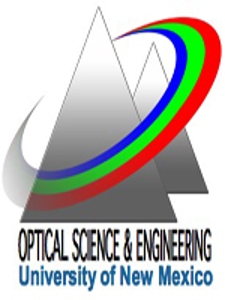OSE Seminar by Dr. Aleem Siddiqui on RF optical signal processing using micro-scale phononic crystals
Departmental News

Posted: December 4, 2019
Date: Thursday, December 5, 2019
Time: 12:15 PM to 1:15 PM
Location: PAIS, Room 2540
Map to PAIS:
ADA Accommodations are available.
Speaker:
Dr. Aleem Siddiqui
Sandia National Laboratories
Abstract:
Nano-optomechanical systems (NOMS) that are simultaneously resonant for optical and acoustical modes have to-date facilitated the exploration of fundamental light-matter interactions on the nano-scale and the development of new classes of information processing devices, by leveraging strong coupling of phononic and photonic modes in coupled-cavity configurations. Alternatively, guided-wave optical devices, where non-resonant optical modes interact with resonant phonon modes, are promising for broadband chip-scale radio-frequency (RF) signal processing, such as filtering, time delay, and low-noise stimulated Brillouin scattering (SBS) oscillators. For example, phononic domain filtering allows channel linewidths of 1MHz to be easily achieved, whereas in the optical domain this would require resonators with impractical Q values of 100,000,000 or more. Additionally, sub-wavelength confinement of optical fields in nano-photonic waveguides produces a new regime of SBS, where the strong interaction of light with the boundaries of a nano-scale waveguide radically enhances SBS for suitably chosen geometries through the coherent combination of optical forces arising from electrostriction and radiation pressure.
In this talk, results on devices enabled by photon-phonon interactions in NOMS devices will be presented. Measurements of a second-order RF filter will be shown, demonstrating an unrivaled combination of dynamic range, bandwidth, and wavelength insensitivity. Also, large signal delay devices enhanced by propagating phonons that greatly exceed what can be achieved using light alone will be discussed.
Biography:
Aleem Siddiqui received B.S. degrees at Massachusetts Institute of Technology in physics and electrical engineering, and also an M.Eng. degree in electrical engineering. He completed his Ph.D. from MIT in 2013 in the area of fiber-based ultrafast laser sources and parametric amplification. His thesis was entitled: Cavity Enhanced Optical Parametric Chirped-Pulse Amplification. Subsequently, he worked as a postdoc at Sandia National Labs researching experimental and theoretical aspects of nano-opto-mechanical (NOMS), piezoelectric devices, and RF MEMS. He has continued this work at Sandia National Labs as a staff member as of May of 2016 where his research expertise is in the areas of ultrafast and nonlinear optics, integrated photonics, MEMS and RF acoustics.
